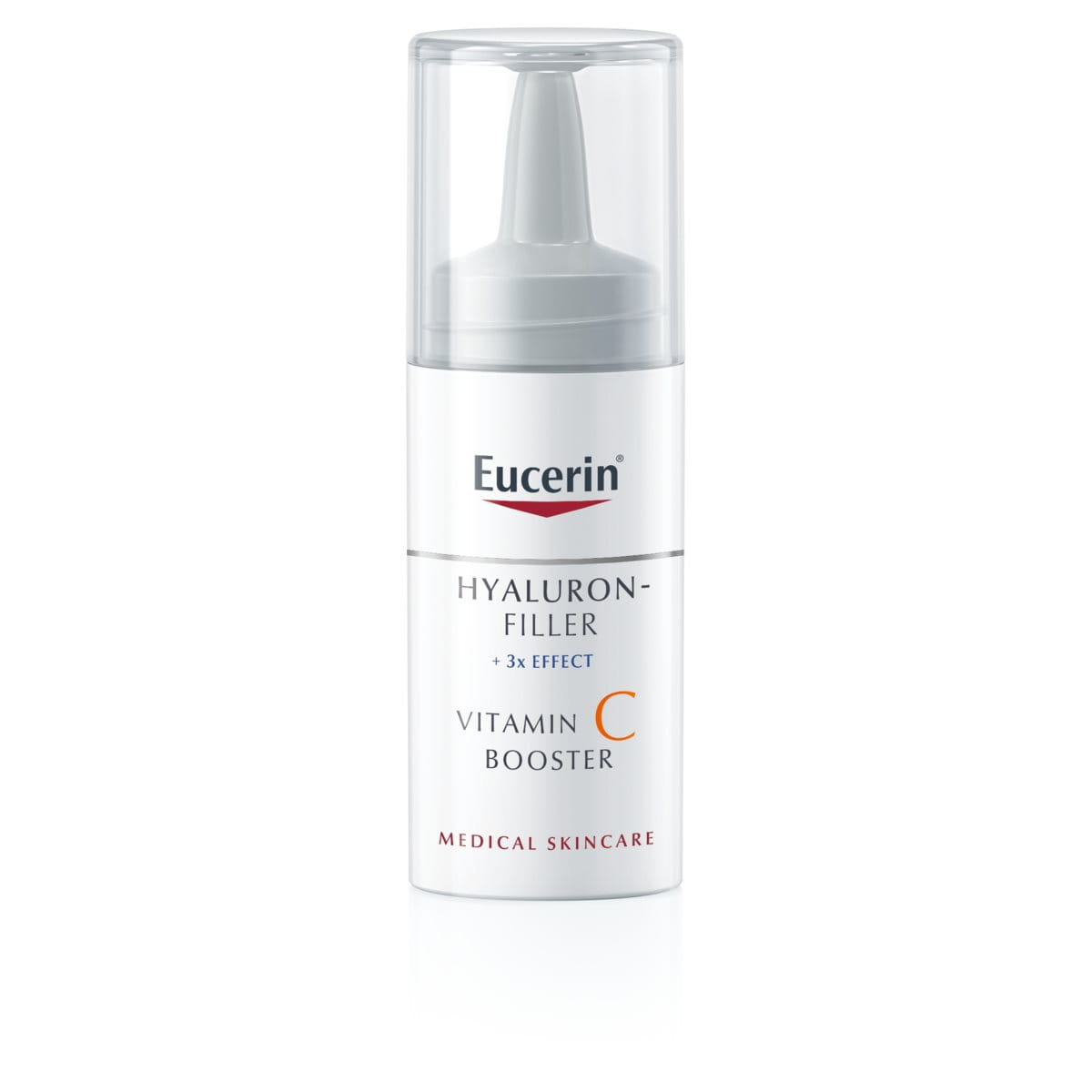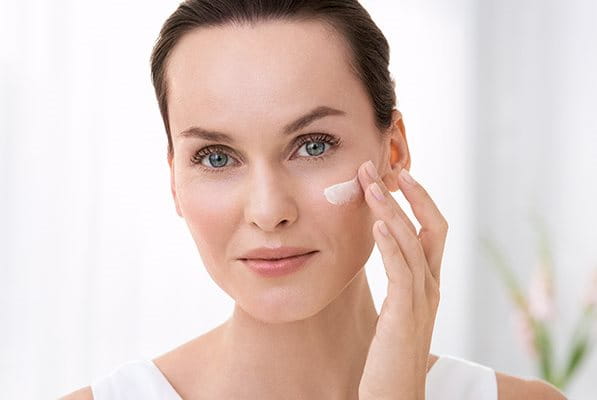We take responsibility. For your skin. And our planet.
Sustainability & Environment
Free of Microplastics (according to UNEP definition)
Foldingbox made of FSC certified paper
UV Filter system without Octocrylene
About
Effectively reduces dark spots and prevents their re-appearance. Eucerin’s Advanced Spectral Technology offers high factor UVA/UVB protection and HEVIS light defense. The sunscreen also supports skin’s own DNA repair mechanism.
NART: 87997-00000-22Sun Face Pigment Control Fluid SPF 50+
Facial sunscreen to prevent sun spots UV light is the main cause of sun-induced skin damage, but high-energy visible (HEVIS) light can also induce free radicals that cause further stress to skin. Sunlight triggers an increase in melanin production which may lead to hyperpigmentation concerns such as sun spots. Eucerin Sun Face Pigment Control Fluid SPF 50+ is an everyday facial sunscreen for all skin types that helps to prevent sun-induced hyperpigmentation. The Advanced Spectral Technology combines broadband and photostable UVA/UVB filters¹ for very high UV protection with Licochalcone A to neutralize free radicals caused by UV and HEVIS light. The anti-pigment sunscreen also includes Glycyrrhetinic Acid which supports skin’s own DNA repair mechanism. The formula is further enriched with Thiamidol, an effective and patented ingredient that acts at the root cause of hyperpigmentation. It visibly reduces dark spots over time and, when used regularly, prevents their re-appearance. Eucerin Sun Face Pigment Control Fluid SPF 50+ has a pleasant light texture that absorbs quickly and is clinically and dermatologically proven to be well tolerated, even by sensitive skin. (1) Meeting the high standards for UVA and UVB protection defined by Cosmetics Europe. The levels of UVA protection are higher than the EU recommendation.
Main findings
Among other clinical and dermatological studies, a Product in Use (PIU) study was conducted with 160 women (aged 25-55) in a hot and humid climate. All were regular users of sunscreen and whitening products. They reported the following results after first two and then four weeks of use:
98%
Protects my skin effectively against sun-induced pigmentation
97%
Dark spots are effectively reduced
97%
Provides a more even complexion
96%
Absorbs quickly
93%
Dark spots are improved over time
FAQ
What is hyperpigmentation and what causes it?
Hyperpigmentation is the term used to describe areas of uneven pigmentation on skin. It appears as darkened patches or spots that make skin look uneven. These dark spots are often referred to as sun spots (or age spots) and hyperpigmentation is also the symptom of skin conditions such as melasma and post-inflammatory hyperpigmentation. The sun is the number one cause of hyperpigmentation as it’s sunlight that triggers the production of melanin, the pigment that gives our skin its color, in the first place. This is why effective UVA and UVB protection with high-energy visible light defense is the most important step you can take in helping to protect your skin from hyperpigmentation.
How do I know which SPF to use?
Sunscreens are available in four different levels of protection: low (factor 6 to 10), medium (15 to 25), high (30 to 50) and very high (50+). The higher the protection factor the better your skin is protected but it’s important to apply the product thoroughly (be careful not to miss any bits) and to reapply it generously every two hours.
What is the difference between UVA and UVB rays?
UVA rays penetrate the deeper layers of skin. They stimulate the production of free radicals in the skin which cause oxidative stress and can lead to indirect DNA damage (where the free radicals modify cellular DNA over time). UVA rays are most commonly associated with premature skin aging. They can also trigger sun allergies such as Polymorphous Light Eruption (PLE). UVB rays can also provoke allergies, but to a lesser degree.
UVB rays provide the energy your skin needs to make Vitamin D and stimulate the production of melanin which is responsible for tanning. They don’t travel as deeply as UVA rays, penetrating only the outermost layers of skin, but they cause more immediate damage such as sunburn. UVB rays are directly absorbed by cellular DNA which can lead to skin diseases such as actinic keratosis and skin cancer.
Both types of UV can induce hyperpigmentation and may contribute to conditions such as sun spots (also known as age spots).
What is high-energy visible light and why does my skin need to be protected against it?
The sunlight spectrum consists of UV, visible and infrared light. Visible sunlight can be detected by the human eye, while the others remain invisible. Part of this visible spectrum has a high energy level and is known as high-energy visible light. It is also referred to as HEVIS light, HEV Light, HEVL and sometimes ‘blue light’ or ‘blue violet light’
Like UVA rays, HEVIS light penetrates the deeper layers of skin and can generate free radicals. These free radicals are one of the main causes of photoaging (premature skin aging caused by the sun) and can also trigger hyperpigmentation.
Many modern sunscreens offer effective protection against UVA and UVB rays, but we recommend that you look out for products that also defend against the negative effects of HEVIS light.
Why should I integrate sun face care into my daily routine?
Facial skin is more sensitive to UVA/UVB radiation and HEVIS light than skin on the rest of the body as it is exposed to sun all year round. Sun protection can help you avoid the cellular DNA damage caused by UV, photoaging (premature aging caused by the sun) and hyperpigmentation. It is important to protect facial skin whenever it is exposed to the sun.
Read also some related articles
















